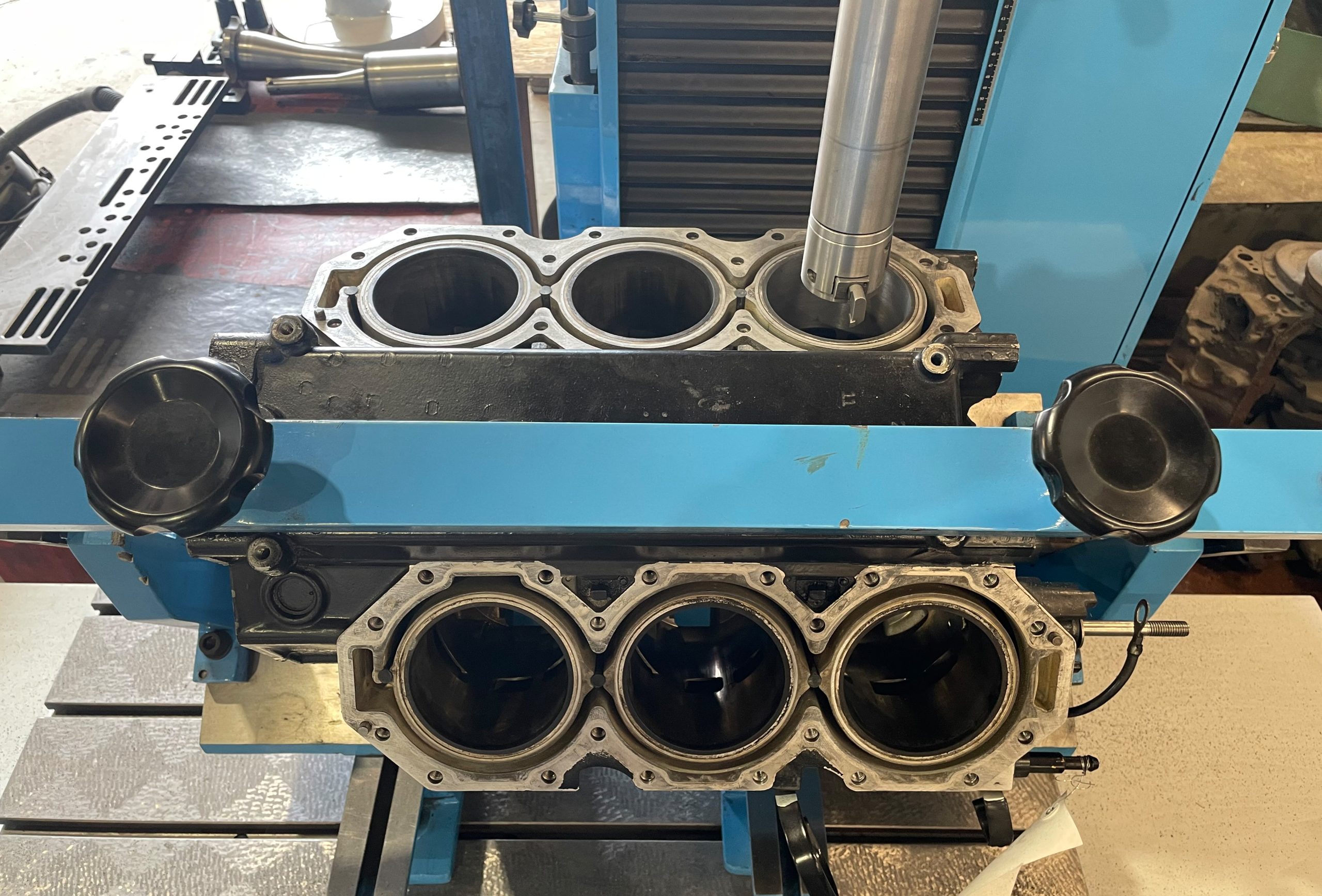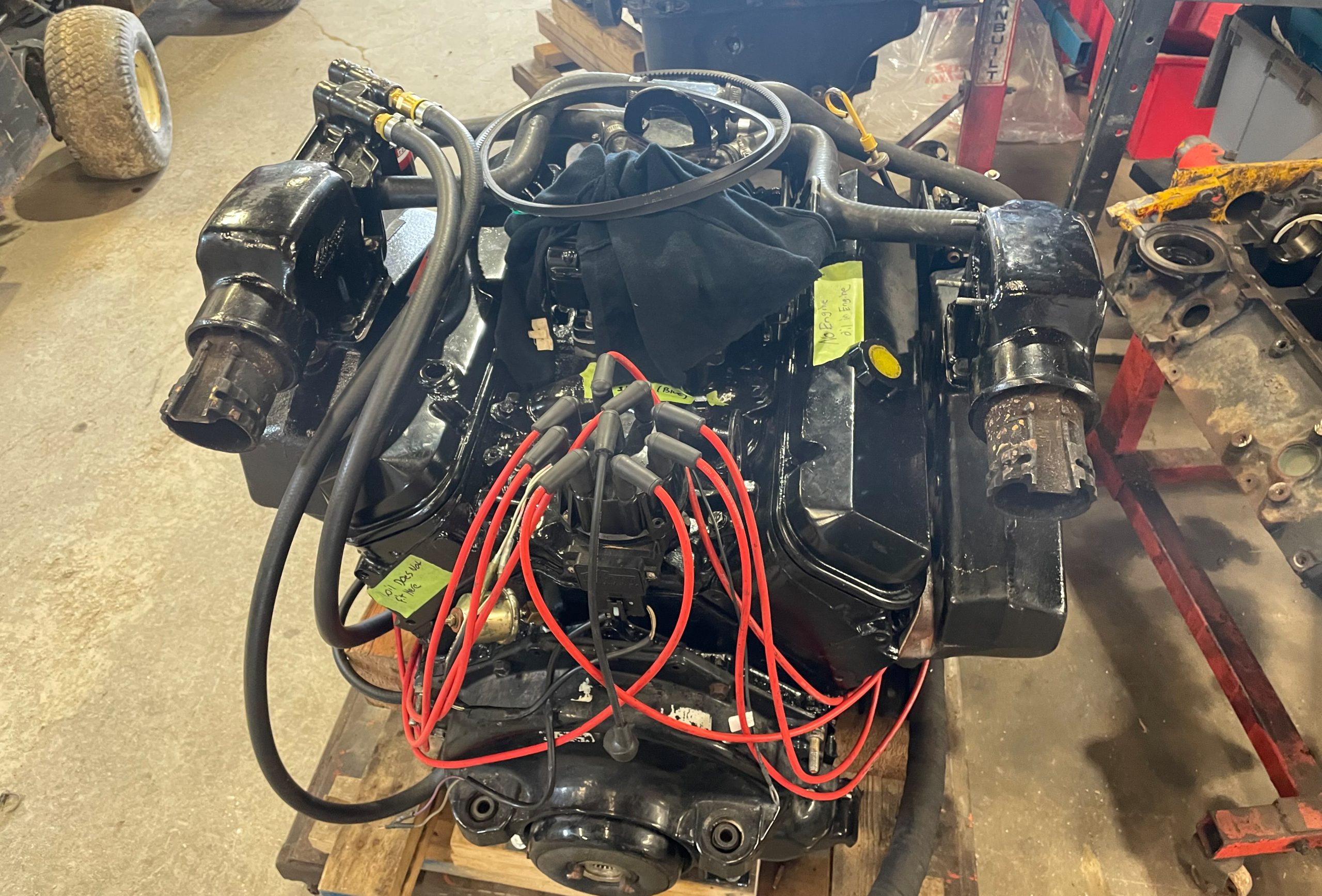OVERVIEW OF MACHINE SHOP SERVICES
Ontario Crank Services provides the highest quality of service, providing engine rebuilding and machine shop services to a variety of powersport and industrial dealers across Ontario.
All makes and models of inboard marine engines, outboard marine engines and personal watercraft are rebuilt by Ontario Crank Services
Long block engine rebuild includes timing cover, oil pan and rocker covers installed with balance of gaskets supplied.
Complete engine rebuild includes the above, with your exhaust manifolds, intake manifold, alternator, starter and all accessories, mounts, hoses, and electrical units installed.
Your engine must be in re-buildable condition. Replacement of cores (heads and blocks) and welding is additional to the cost of rebuilding your engine.
Ignition, carburetion, oil, filter, outdrives or transmissions are not included in the cost to rebuild the engine. Pricing is for the rebuilding of internal engine assembly only. (Pricing is available for items not included.)
OCS Marine Services’ engine rebuilds are warranted for twelve to twenty four months from the date installations.


OCS MACHINE SHOP SERVICES INCLUDE BUT NOT LIMITED TO:
- CAM BEARING INSTALLATION
- STRIP AND CLEAN
- CRANKSHAFT GRINDING
- CRANKSHAFT POLISHING
- FIT PIN BUSHINGS
- HONING AND BORING
- LINE BORING
- MAGNAFLUXING
- MILLING
- PRESS WORK
- RECONDITION RODS
- CYLINDER HEAD WORK
Cam bearing installations begin by thoroughly cleaning the camshaft bore in the engine block to remove any debris or contaminants. The new cam bearings are then carefully lubricated and placed into the respective bores using specialized installation tools. Precision is paramount during this step to ensure proper alignment and seating of the bearings. Once in place, the bearings are securely pressed or tapped into position, ensuring they are flush with the surface of the engine block. Properly installed cam bearings provide critical support and smooth rotation for the camshaft, facilitating optimal valve timing and engine performance.
The engine block is dismantled, separating components like pistons, connecting rods, and the crankshaft. Once disassembled, each part undergoes a meticulous cleaning process to remove dirt, grease, and any built-up deposits. Various methods like jet washing, solvent cleaning, and media blasting may be employed depending on the level of contamination. After cleaning, components are inspected for wear or damage, and necessary repairs or replacements are made.
Crankshaft grinding is a precision machining process used to restore the dimensions and surface finish of a worn or damaged crankshaft. It begins with disassembling the engine and removing the crankshaft. The crankshaft is then inspected for wear, cracks, and other defects. Next, it is mounted on a specialized grinding machine that rotates the crankshaft while abrasive grinding wheels remove material from the crankshaft’s journals and rod bearing surfaces. The grinding process is carefully controlled to achieve the desired dimensions and surface finish while maintaining proper alignment and concentricity. After grinding, the crankshaft undergoes further inspection to ensure that it meets specified tolerances and quality standards. This process is essential for restoring the functionality and longevity of the engine’s rotating assembly.
Crankshaft polishing on powersports and marine engines is a vital process that aims to restore the surface finish of the crankshaft journals, ensuring smooth operation and longevity. The process typically begins with careful inspection of the crankshaft to identify any imperfections, such as scratches, scoring, or wear patterns. Once identified, the crankshaft is mounted on a specialized polishing machine, and abrasive polishing belts or wheels are used to remove a thin layer of material from the journal surfaces. This removes any surface imperfections and creates a smooth, uniform finish. Throughout the process, precise control of pressure, speed, and abrasive grit is crucial to achieve the desired surface finish without compromising dimensional accuracy. Crankshaft polishing is essential for reducing friction, preventing premature bearing wear, and maintaining optimal engine performance in powersports and marine applications.
- 4,6 or 8 cylinder set
Boring and honing are essential machining processes for powersports and marine engines aimed at restoring or modifying cylinder bores for optimal performance. Boring involves enlarging the cylinder bore to a larger diameter, typically to accommodate oversized pistons or to repair cylinder damage. This is achieved using a precision boring machine that removes material evenly from the cylinder walls. Once the desired bore diameter is reached, honing is performed to create a smooth, cross-hatch pattern on the cylinder walls. Honing removes any remaining irregularities and ensures proper piston ring seal by providing the ideal surface finish. This process is critical for maintaining compression, reducing friction, and optimizing engine efficiency in powersports and marine applications.
Line boring is a machining process crucial for restoring proper alignment and dimensions to the main bearing bores in powersports and marine engine blocks. Over time, wear or damage can cause misalignment or deformation in the main bearing bores, leading to issues like excessive vibration or bearing failure. Line boring involves mounting the engine block on a specialized line boring machine and precisely machining the main bearing bores to ensure they are concentric and parallel to each other. This process may also involve installing oversized bearing inserts to compensate for any material removed during machining. Properly aligned main bearing bores are essential for maintaining crankshaft stability, reducing friction, and ensuring long-term engine durability and performance in powersports and marine applications.
Magnafluxing, also known as magnetic particle inspection, is a non-destructive testing method used to detect surface and subsurface cracks in engine blocks and other metal components. The process involves magnetizing the engine block by passing an electric current through it or by using a strong magnet. Then, a special magnetic particle solution, often containing iron oxide particles, is applied to the surface of the block. If there are any cracks or defects present, the magnetic particles will be drawn to these areas, forming visible indications. After a specified dwell time to allow the particles to gather, the surface is wiped clean, leaving behind a pattern of accumulated particles that reveal the location and extent of any defects.
Milling work on powersports and marine engines involves using specialized milling machines to modify the cylinder head and engine block surfaces for various purposes. This process can include milling the cylinder head to increase compression ratio, improve airflow, or correct warpage. Additionally, milling the engine block surface can be done to achieve proper deck height, ensure a flat mating surface for the cylinder head, or enhance piston-to-valve clearance. The milling machine precisely removes material from the specified areas, taking into account the engine’s design tolerances and performance goals. Proper setup and machining techniques are crucial to maintaining structural integrity and ensuring optimal engine performance. Milling work on powersports and marine engines is often performed as part of engine building or rebuilding processes to optimize power output, reliability, and overall efficiency.
Press work in powersports and marine engines involves the controlled application of force to assemble or disassemble components. This encompasses tasks such as pressing bearings, bushings, gears, and shafts into place, as well as removing stubborn or seized parts. Hydraulic or mechanical presses, along with specialized tooling, are utilized to ensure precise application of force while minimizing the risk of damage to components. Whether it’s pressing crankshaft bearings into engine cases, installing piston pins, or mounting gears onto shafts, proper press work is essential for maintaining the integrity and functionality of engine assemblies.
- each or in sets
Our cylinder head services encompass a range of tasks, including thorough disassembly, cleaning, and meticulous reassembly. We conduct valve grinding and lapping to ensure optimal sealing, and we’re equipped to replace valve guides, installing bronze guides when necessary. Additionally, we offer spring seat cutting, accommodate oversize valves, and perform surface grinding to restore proper dimensions and finish. This comprehensive approach ensures that cylinder heads receive the necessary attention for improved performance and longevity.
Our goal at OCS marine service is to provide you with complete service for your boat, PWC, ATV and snowmobile, with our trained and insured staff.
Info
- (705) 329-7222
- Monday - Friday 9:00am to 5:00pm

